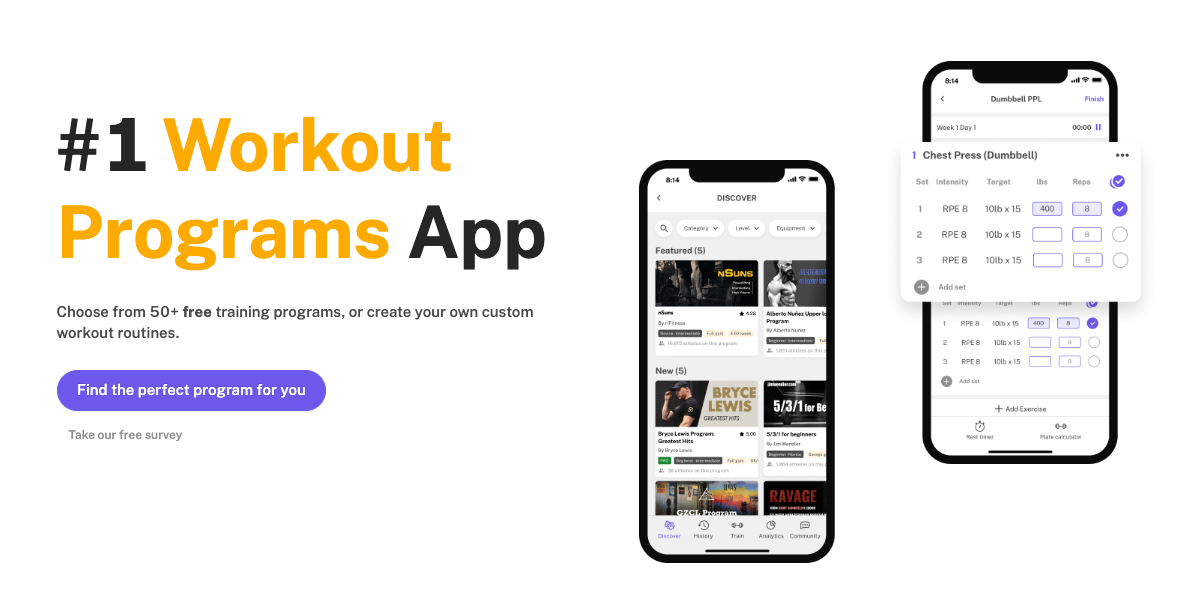Your First Powerlifting Meet: Tips, Tricks, What to Expect
Written by The Boostcamp Editors
First Powerlifting Meet: Tips and Tricks for Success
Clifton Pho - Powerlifting Coach | Last modified on March 28th, 2023
If you’re reading this, you’ve probably been training your squat, bench press and deadlift, hitting some impressive one rep maxes. Perhaps you have even considered signing up for your very first powerlifting competition. Signing up for your first powerlifting meet may seem like a daunting task, but you’ll learn to conquer the platform with this article where you’ll learn tips, tricks, and what to expect on game day, including following a structured training program.
Table of Contents
How to sign up for a powerlifting meet?
How do I know when I’m ready for a powerlifting meet?
What you need to do before your first powerlifting meet
What you need to do at your first powerlifting meet
Tips for your first powerlifting meet
What you don’t need to do at your first powerlifting meet
Conclusion - putting a total together
How to Sign up for a Powerlifting Meet
First thing’s first, you need to sign up. Every powerlifting federation has its own set of nuances so this may vary depending on where you are located and which organization you intend to compete in. For example, they may have their own set of requirements and memberships that you need to apply for prior to signing up for a competition. Read your local powerlifting website for more information or ask some other competitors for some guidance on where to obtain more information. Trust me, people are more than willing to share and help you out, including on social media platforms like Facebook and Instagram.
Once you have all the prerequisites that you need, you are ready to sign up for your first powerlifting meet. To start, you have to find a meet that works for you. Make sure the date works for your schedule, and it’s in a location that is accessible. The last thing you want is to sign up for a powerlifting meet in London thinking it’s in England but actually in Ontario.
Here’s an example of what this looks like in Alberta, Canada. To sign up, you must have an active membership with the provincial (Alberta Powerlifting Union) and national (Canadian Powerlifting Union) federations. From there, you can sign up for your first meet, such as USA Powerlifting (USAPL) or USPA. Make sure the meet is a local meet, meaning it is not a provincials, regionals or nationals. You will need qualifying totals before you can compete at those higher level meets.
A standard intake form will include your personal details such as your name and address, along with your membership number, weight class, age category, division such as 3-lift, bench-only, classic or equipped and even a t-shirt size (yes, you get a meet T-shirt). Remember to pay for the meet, or else your submission is not finalized. If you have any questions or concerns regarding this process, reach out to your local meet directors as they are more than happy to help you out.
Powerlifting Tip: If you’re unsure of your weight class, you can typically still lift even if you don’t make weight at the local level. So just choose the weight class you think you’ll be competing in.
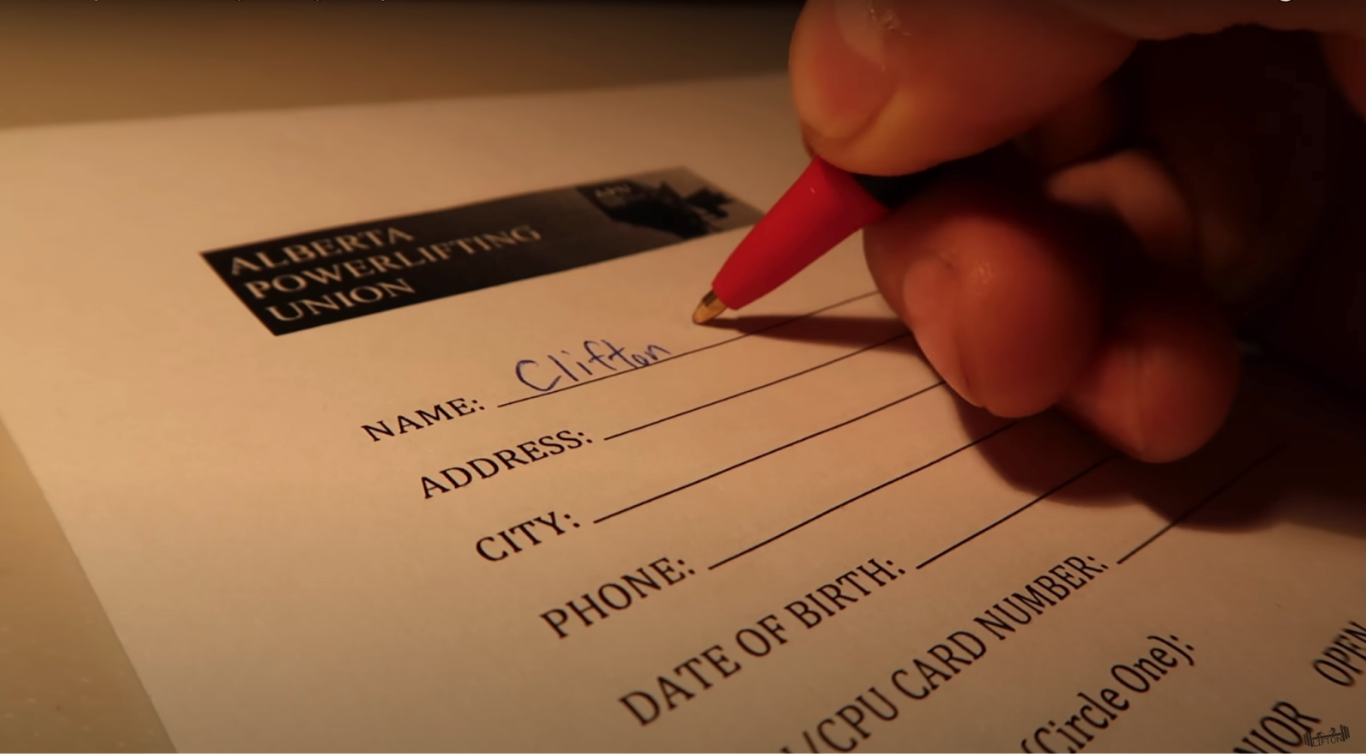
How do I Know When I’m Ready for a Powerlifting Meet?
This is one of the most common questions lifters have. Whether you are a beginner, or even an elite athlete, at some point the seed of doubt enters your brain. “Am I even ready for a competition?” “I need to be stronger before I can compete, right?”
The short answer is no. You can compete whenever you want to. It’s as simple as that. There are no prerequisites (at least for a local meet). You can lift 100 pounds or 500 pounds. You can be 80 years old or 10 years old. Everyone is welcome, and if you are interested in competing, you absolutely should. Consider what your goal is for your first competition and let that dictate whether you want to sign up. If you just want to experience it, then go for it. If you have specific goals in mind and would not be happy with your performance, you could potentially wait until you get stronger. However, there is a lot to learn from competing, and it won’t hurt to start building that experience early.
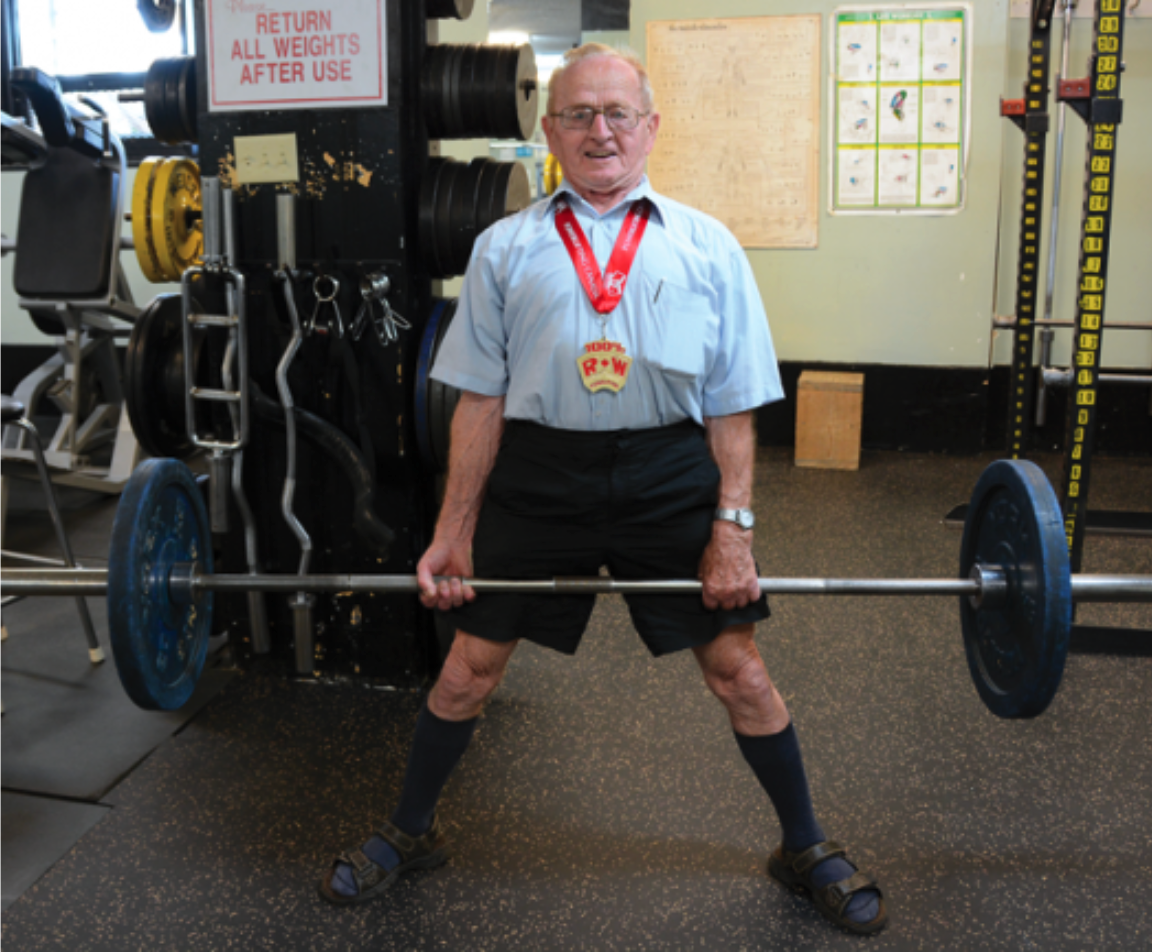
What You Need to do Before Your First Powerlifting Meet
Assemble your gear
Ok so let's say you’re convinced and have successfully signed up for your meet. Now what? Well for starters you need to make sure you have the equipment in your gym bag that you need to lift on the platform. Many federations have a specific list of approved gear that can be worn. If your gear is not approved, you will not be able to use it on the platform. So if you like to use a weightlifting belt, knee wraps or knee sleeves, wrist wraps, (not wrist straps) etc. Make sure everything is approved. Some local meets might give you a bit more slack, but if you’re planning to compete for a while, you’ll want to make sure you invest in gear that is usable at higher levels of the sport. Here’s a link to the list of approved items in the International Powerlifting Federation, including knee wraps, keep in mind this does change overtime.
IPF Approved List 2023-2026
You will also notice there are some non-negotiables that you have to have such as a singlet, long socks on the deadlift, weightlifting shoes, and even certain types of underwear that are prohibited in competition. Aside from equipment, you may also need to complete modules such as Canadian Center for Ethics in Sport (CCES) if you are competing in a drug tested federation. DO NOT leave this until the last moment. Now this might seem overwhelming, but aside from these non-negotiables you really don’t need anything else to compete. Closer to the competition, the meet directors should release a schedule which tells you when you will weigh in and when you will lift. This can change slightly depending on the day, but this will tell you when you need to be at the competition.
Another thing you need to know is that a powerlifting meet can be an extremely long day. Pack enough food and fluids to replenish your energy throughout the day. Choose foods that you like and are familiar with. The last thing you want is to have a stomach ache the day of the competition. This is even more important if you choose to cut weight prior to the competition. If it is your first meet, you should probably focus more on your performance and experience versus cutting down a weight class. If you do choose to cut weight, make sure you plan early and know your gameplan heading in. Remember, it's a whole lot easier to under-eat and overtrain than it is to overeat and undertrain, meaning don't compromise performance just to make weight or look good. Additionally, focus on eating plenty of protein with a good balance of carbs and fats to ensure proper nutrition and calories, giving yourself plenty of time to fuel your body for optimal performance.
Here’s a brief checklist to ensure you’ll be able to lift at your first powerlifting meet. To keep things simple, this will be focused on a 3-lift raw/classic powerlifting division, and not equipped.
Singlet
Approved underwear
Long socks for the deadlift (knee high)
Belt, knee sleeves, wrist wraps (if you choose to have them)
Enough food and fluids to last a day
CCES certificate and proof of membership where applicable
Brush up on the rulebook
Now arguably the most important thing that you should know which many people forget is to be familiar with the rulebook. Take some time to explore what a lift to competition standards is. That way, you know exactly how to get those three white lights and won’t be shocked if you somehow get a red one. For example you have to listen to the judges commands before you can start or even finish the lift. The more you know before the meet, the better you can prepare in your own training by practicing your lifts to the competition standard. A new rule was also passed regarding bench depth this year, so even seasoned veterans should read the rulebook often and avoid any unnecessary weeks of training.
Another ‘rulebook’ of sorts you will want to read is the list of banned substances such as the WADA prohibited list if you lift in a drug tested federation. It’s good practice to know what you are putting in your body anyways and what goes and doesn’t go in your respective sport/federation. Remember, negligence is not an excuse, if you want to compete, make sure you are aware of the rules or you will face the consequences should you happen to break them.
Anyways, back to the bar. The competition itself will usually be performed on a competition combo rack with a competition bar and accessories. If you have access to the same equipment, then you can get your rack heights and safeties prior to the meet, although you can easily do this the day of the competition too. However if you do have access, it can be a great idea to train on the equipment to get a feel for what it’s like.
In general, here’s a brief overview of the common things you should know about the squat, bench, and deadlift according to the latest rulebook for the IPF which you can find here: https://www.powerlifting.sport/rules/codes/info/technical-rules
Squat
You will have a ‘squat’ command before you can initiate the lift. You will also get a ‘rack’ command before you can rack the squat and finish the lift. Common issues here are not squatting to depth and not having the knees fully locked out before and after the lift.
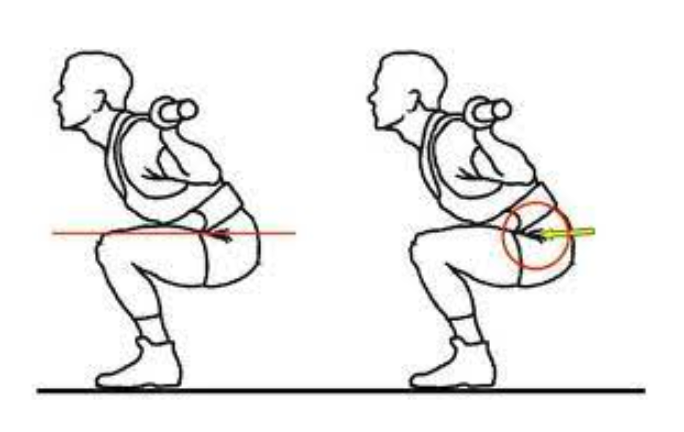
Bench
This is the most technical of the three and like the squat you will have a ‘start’ command to initiate the lift. You will then be required to pause on the chest and get a ‘press’ command. Finally you will also get a ‘rack’ command upon completion of the lift. Common issues here are not pausing or bouncing off the chest, and glutes coming off the bench. Check out our article on performing the barbell back squat like a pro.
You may also notice someone giving liftoffs, be sure to tell this person how you want your liftoff if you choose to have one.
Deadlift
This is the simplest of the three, simply pick up the weight and wait for the ‘down’ command before finishing the lift. Make sure you guide the weight down because if you drop it, you may get a no lift for not controlling the bar on the way down.
You’ll notice many Boostcamp programs have “competition” followed by the respective lift. This means that these lifts should be completed to competition standard, so get in the habit of doing so. Grab a friend or someone at the gym to give you commands. An extra pair of eyes is always useful to help judge whether your lift is technically sound, such as if you’re squatting to depth or keeping your butt down on the bench press. If no one is available, consider taking video as well to review your lifts. Be honest with yourself, if you can’t perform the lift to the competition standard, reduce the weight as needed. Programs such as the one below will have this built in to ensure you’re at your top performance on squat day and competition day.
The Best Powerlifting Program
In order to be properly prepared for your powerlifting meet, check out some of these programs below.
TSA 9 Week Intermediate Approach
If your competition is over 9 weeks away, this is an excellent choice to get you peaked and prepared for the platform. The TSA 9-Week Approach is a great intermediatel-level powerlifting program designed by Bryce Lewis and the coaching team at The Strength Athlete (TSA). It's a periodized plan focusing on strength gains in three compound lifts: squat, bench press, and deadlift.
The program comprises 4 training days per week, each targeting specific muscle groups and lifts. The intensity and volume gradually increase over 9 weeks, preparing the athlete for a peak in performance. The final week, Week 9, is designed as a deload week to prepare for a competition or 1RM testing.View the program here:
https://www.boostcamp.app/bryce-lewis/tsa-9-week-intermediate-approach

If your competition is sooner, try searching for other powerlifting peaking programs on boostcamp. You’re bound to find one that fits your specific circumstance. To search for more programs, simply browse or filter according to your experience level, equipment access and preferred workout days per week here. When it comes to finding the best powerlifting programs, Boostcamp can be your last stop. When you are looking for a program to kickstart your powerlifting prep, or something that can bring you through the last few weeks, take a look right on the Boostcamp App. There are plenty of push pull legs programs to be found, amongst other free programs, over fifty to be exact.
When it comes to finding and following a new workout program and seeing how you are progressing with it, you would want to find a platform that caters to your needs and guides you in the right direction. Boostcamp can do that, and it can even help you to measure your progress, track your workouts, and continue with linear progression.
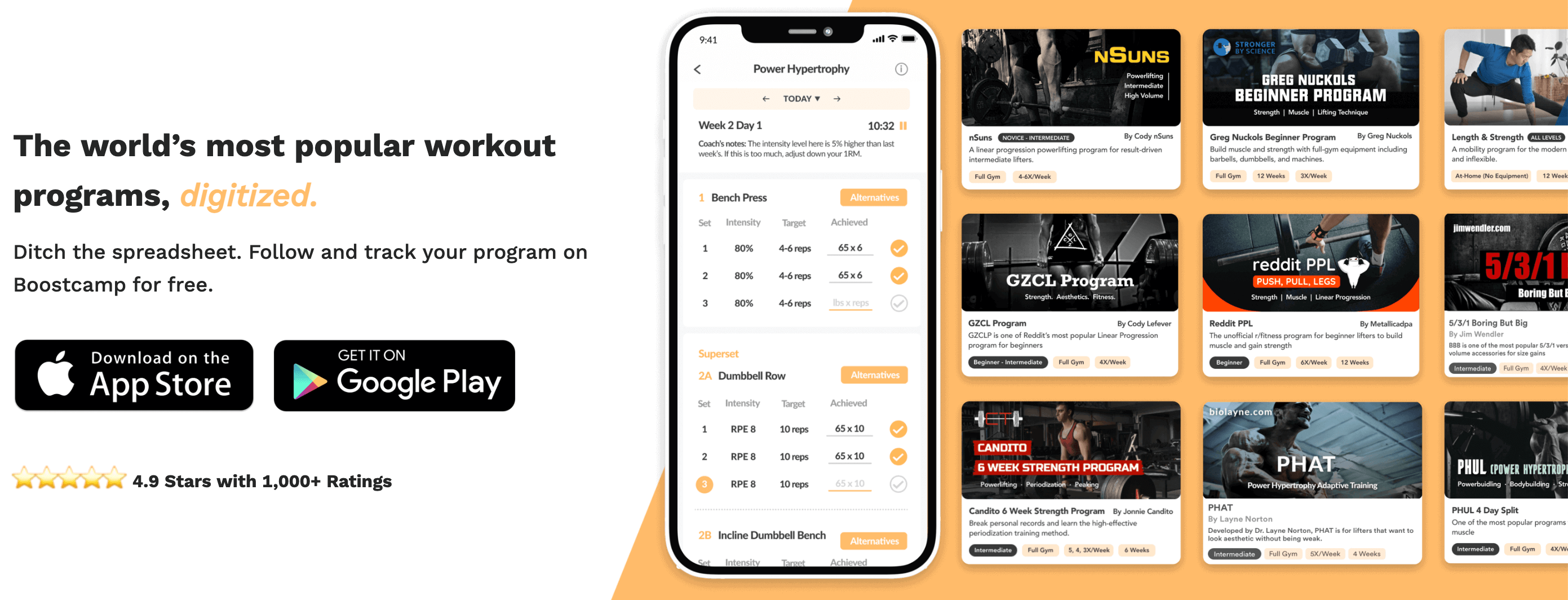
What You Need to do at Your First Powerlifting Meet
So hopefully you took the advice and read the rulebook, that way this section will be a breeze. Nevertheless, here’s a rundown of what the day might look like for you.
Check-in and weigh-in
Pack everything you need for the powerlifting meet, and head to the venue early (especially if you don’t have your rack heights). Refer to the checklist above and the schedule for everything you need to know.
At the venue you will need to do two important things. The first thing is called an equipment check. This is where you will show the judges all the equipment you will be using on the platform. They will check to make sure everything is approved and you have everything you need to lift. Don’t worry, this is not scary, everyone is here to help and wants you to succeed.
The next thing, which might be done before the check-in, is your weigh-in. There will be a list outlining the order of weigh-ins. Make sure you are there when they call your name or you might be pushed at the very end of the list. When you weigh-in, you will give your opening attempts, including your first attempt or "opener," along with your rack heights and safeties for all three lifts. You will also receive your attempt cards which is what you will use to put in your subsequent attempts when lifting. Weigh-ins are typically two hours before your session begins, but this can vary depending on your particular federation.
Get ready to lift
Now that you are all weighed in and have all your equipment checked, there is only one thing left to do. It’s time to prepare for the platform. In the two hour span, make sure you are adequately fueled up for the day, especially if you cut weight. From there, you will begin to put your gear on and start warming up. Look at the schedule to see when you are up and plan your warmups accordingly. More often than not you will have A LOT of time. The order of who goes first will be determined by the weight on the bar, starting with the lowest first. You will have 3 attempts for each lift, with your second attempt being a precursor to your third attempt. This period is equal parts technique and form training as it is strength training. It’s a good idea to let your body get a feel for 90-95% of your max weight and ensure you can maintain good technique.
There are usually at least two flights that will alternate during a session with a flight having a maximum of 14 people. Here’s an example of what a typical session might look like.
Session one
Flight A - 14 lifters
Flight B - 14 lifters
6:00am weigh-in, 8:00am start
~6:00am - Flight A weigh-ins
~6:45am - Flight B weigh-ins immediately following Flight A
~8:00am - Flight A starts squats (all 3 attempts)
~8:45am - Flight B starts squats immediately following Flight A
10 minute break
~10:00am - Flight A starts bench (all 3 attempts)
~10:45am - Flight B starts bench immediately following Flight A
~11:00am - Flight A starts deadlifts (all 3 attempts)
~11:45am - Flight B starts deadlifts immediately following Flight A
Awards
There should be screens with the schedule and also a scoresheet for you to keep track of the competition and when you are up next. The announcer may use words such as “on deck” which means you’re up next and “in the hole” which means you’re the lifter following the one up next.
When it is your turn, you will have 60 seconds to successfully start the lift. If you time out, your lift will be considered a failed one. At the end of your attempt, whether successful or not you have 60 seconds to submit your next attempt using the attempt cards you were given. If you do not submit an attempt, the subsequent lift will either stay at the same weight if you missed it, or go up 2.5kg if you made the lift. Your third and final attempt, or PR, should be based on how well your second one moved. Depending on how you feel, you may end with anywhere from 98-102 percent of your projected goal.
Pro tip: Sign these attempt cards BEFOREHAND, the less you have to do up on the platform, the better.
A light system is used to judge your lifts with three referees. A good lift is when you receive at least 2 out of 3 white lights. In the case of a failed lift, you usually can figure out the reason for it as there are subsequent lights under the red light that explain why you failed. You may even be able to go to a jury to argue and overrule the decision if there is one, but read on at your local rulebook if you want to learn more. For now, the moral of the story is to chase the white lights, not the red ones.
Deadlift attempt nuances
Now this is not meant to be an all inclusive guide on the nuances of competition, but it would be a huge shame if you did not know that you can actually change your attempt only on your final deadlift up to two times (dependent on federation of course). This is usually done when lobbying for a position such as pulling for the win. You likely won’t need to use this at your first competition, but on the off chance you do, know that you can change the weight to a lower weight on your final deadlift to an extent for a chance to put yourself on the podium.
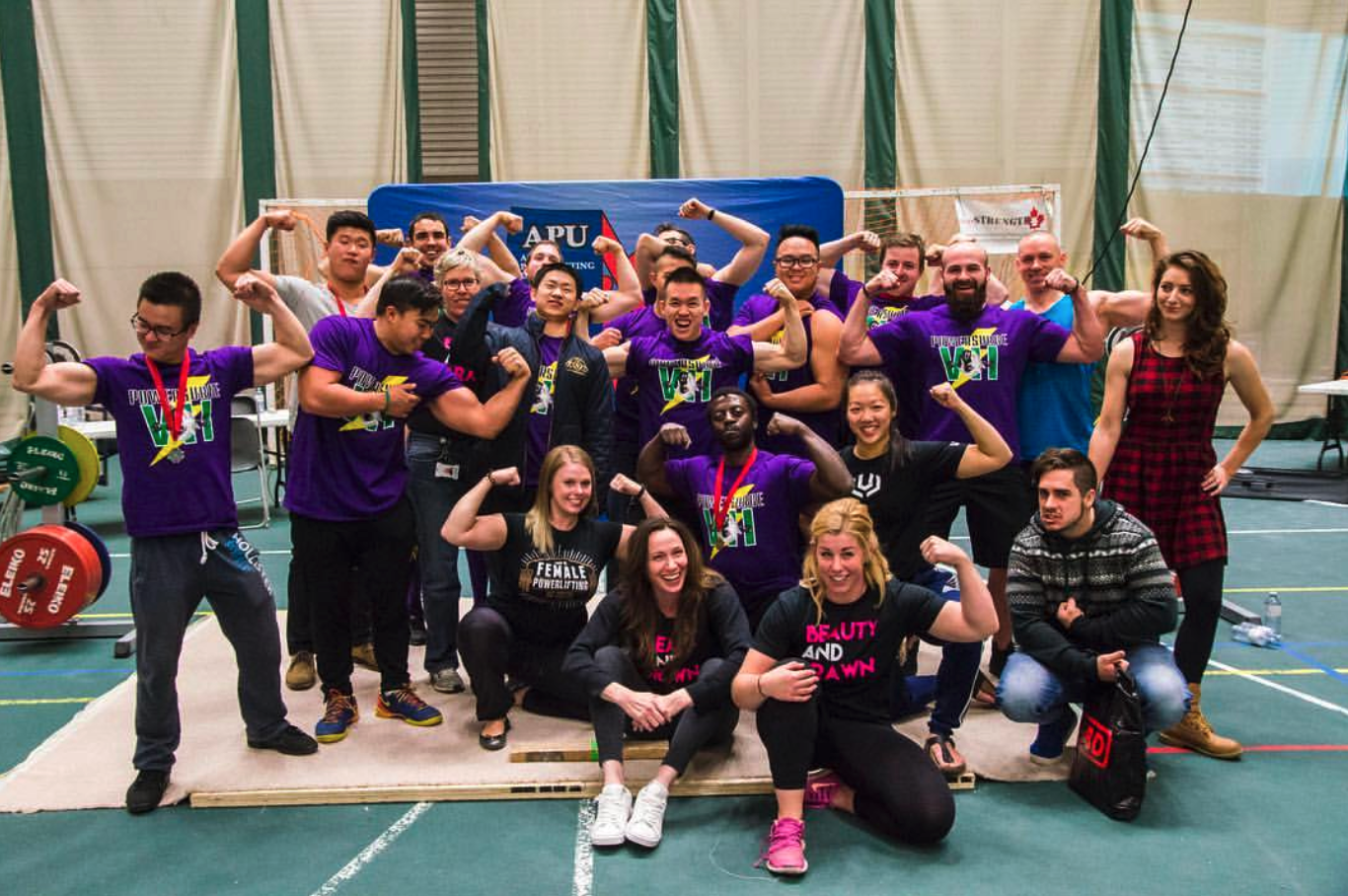
Tips For Your First Powerlifting Meet
So that’s pretty much it when it comes to a powerlifting meet. Sign up, show up, and have fun! Here are some tips to ensure your first experience is a great one.
Relax
There is always another meet, try not to stress about it and enjoy the competition. You’ll figure out what works best for you overtime.
Arrive early or even the day before if possible
If you can, check out the venue beforehand, it’ll help to ease your concerns and give you a chance to gather all the information you need for the meet. You’ll be more confident on gameday when you already know where to go.
Don’t cut weight
You have enough things to worry about at your first competition. It’s best not to add even more factors that can severely impact your performance such as cutting weight.
Read the rulebook
Sick of this one yet? Reading the rulebook is the ultimate hack to conquering your first competition.
Consider a gameday coach or handler
You don’t need someone to help you on gameday, but it can definitely help. Most competitions will allow you to have a coach or handler to assist you during your performance. Having someone write your attempts or load your weights and keep track of time can be a game changer.
Stick with what you know
You don’t need to reinvent the wheel here. You can look at it as a glorified training day. Eat familiar foods and do what you are comfortable with. At the end of the day, you can spend time reflecting on where you can improve for next time.
Be adaptable
Things might not be optimal. Your session may be delayed, you might be stuck with a shitty bar or not have the right weights when warming up. Be flexible on the day to maximize your performance.
Know your kilograms
If you work in pounds, it’ll be a shocker to know kilograms are usually used in competition. Don’t be the person who doesn’t know that, know your kilograms.
Taper your expectations
The meet might not turn out exactly the way you think. It’s best to go in with an open mind and take what’s there. If you need to go down in weight because things feel heavy, no shame in that. Better a made lift than a missed one.
Don’t give up
They say the meet isn’t over until the bar hits the floor. If squats didn’t go the way you like, don’t let it get to you. You still have plenty of lifts left, and you might end up surprising yourself by the end of the day.
Volunteer
A great way to learn more about powerlifting meets is to volunteer. You’ll also be giving back to the sport. Besides, it’s one of the best seats in the house to watch the action.
Ask questions
Be a sponge, don’t be afraid to talk with other people and even ask for assistance. Powerlifters may look big and scary but most are very open and willing to help, even if they may be your immediate competition.
Have fun
Lastly, make sure you have a blast whatever that looks like for you. Like to scream after a personal record? Go for it. A smile is enough? That’s fine too. Enjoy the day, you’ve worked hard for it.
What Not to do at Your First Powerlifting Meet
Now that you’re well equipped for your first powerlifting meet, here are some things you don’t need to do.
Do not dump the bar
Not only can this be extremely dangerous for the spotters, but it can get you kicked out of the meet. If you are failing a lift, please stick with it and help the spotters.
Do not be rude or disrespectful
Getting amped up is ok, but try not to swear excessively or take it out on others. No one is out to get you if you get red lights, be professional and stay classy out there on the platform.
It doesn’t have to be perfect
It’s your first meet, it doesn’t have to be perfect. You might not set any records, you might miss some lifts, that’s ok. Again, there is always another meet.
Do not hog the warmup room
You are not the only lifter, please be considerate of other lifters and share the space.
Do not get cocky
Celebrate your achievements for sure, but please don’t be cocky just because you did your first powerlifting meet.
Do not leave a mess
Volunteers help make the sport possible, try not to make their jobs harder by cleaning up after yourself. If you like using baby powder, there are usually dedicated areas for this.
Conclusion - Putting a Total Together
The countdown to building your first big total begins now. You now know what to expect on gameday, and have a healthy list of tips and tricks to guide your performance. Remember to prepare in advance, read the rulebook, and equip yourself with the skills to obtain those elusive three white lights. One of the officials on meet day will have a conversion chart handy so that you can make an educated decision about your 2nd and 3rd attempts. The bar is loaded.
Also, be sure to follow Boostcamp on Instagram and subscribe on YouTube!
